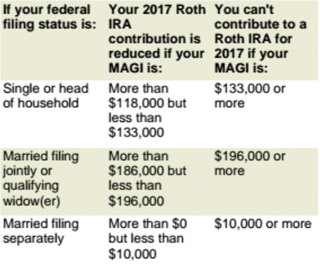


Answers do not constitute written advice in response to a specific written request of the taxpayer within the meaning of section 6404(f) of the Internal Revenue Code. For information about nonresidents or dual-status aliens, please see International Taxpayers.Ĭonclusions are based on information provided by you in response to the questions you answered. only there for school) so OR would be considered your state of residence. Your stay in UT is probably considered a temporary absence (i.e. The maximum annual contribution limit is 5,5. citizen or resident alien for the entire tax year. Unfamiliar with the particular states stances on residence rules however, the Roth IRA distributions are passive income taxed to your state of residence. Traditional IRA (total of 2,000), you may only contribute up to 3,500 to your Roth IRA (for a total of 5,500 in 2016). If married, the spouse must also have been a U.S. citizens or resident aliens for the entire tax year for which they're inquiring. The tool is designed for taxpayers who were U.S. The year the employee first made contributions to the plan.For a designated Roth account distribution:.The year a Roth IRA was first established for your benefit.Because distributions from Roth IRAs are not included in modified AGI, they cannot cause the 3.8 surtax on net investment income to apply. Whether your Traditional IRA contribution is deductible on your federal income tax return depends on your. Your basis is the amount of contributions in your Roth IRAs. Threshold amounts are 250,000 for joint or surviving spouse returns, 125,000 for separate returns, and 200,000 in other cases (Sec. Roth IRA contributions are not tax-deductible. Whether or not you have a cost basis to recover.This topic doesn't address either the return of a Roth IRA contribution or return of a prior year's excess contribution, or a corrective distribution of excess contribution from a designated Roth account. In that case, your tax liability for the conversion is based on the ratio of any nondeductible contributions to the total balance in all of your traditional IRAs (see Smart Ways for High Earners to Contribute to Roth IRAs).įor more information about the benefits of a Roth, see Why You Need a Roth IRA.This interview will help you determine if your distribution from a Roth IRA or designated Roth account is taxable. However, you may have a bigger tax bill than expected if you have any pretax money in a traditional IRA. If that nondeductible contribution is the only money you have in any traditional IRA, you'd owe taxes only on any earnings between the time of the contribution and the conversion. You can keep the money you contributed in previous years in the account.īecause there is no income limit for converting money from a traditional IRA to a Roth, you could take the nondeductible contribution you put in the traditional IRA and transfer it back into a Roth IRA. If you made contributions to the Roth in earlier years, the administrator should calculate how much of the earnings in the account should be attributed to the 2014 contribution. Instead of withdrawing the money and paying taxes on the earnings, however, you can ask your IRA administrator to switch your 2014 Roth contributions (plus all of the earnings on that money) to a traditional IRA before the tax-filing deadline.


 0 kommentar(er)
0 kommentar(er)
